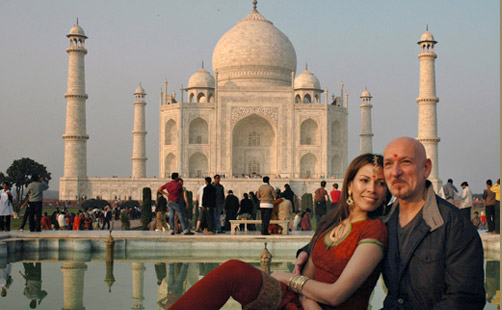
- Industry
A Brief History of Indian Cinema
One of the most flourishing cinema industries found today is in India. But the pioneers of the industry were actually foreigners. In 1896, the Lumiere brothers demonstrated the art of cinema when they screened Cinematography consisting of six short films to an enthusiastic audience in Bombay. The success of these films led to the screening of films by James B. Stewart and Ted Hughes. In 1897, Save Dada made two short films, but the fathers of Indian cinema were Dada Saheb Phalke who in 1913 made the first feature length silent film and Ardeshir Irani who in 1931 made India’s first talking film. With the demise of the silent era and the advent of the talkies, the main source for inspiration for films came from mythological texts. Films were produced in Hindi, Tamil, Telugu and Bengali. Mythology flourished more in South India where its social conservative morals equated film acting to prostitution. But by the 1930’s, word had spread around the world about the vibrant film industry in India and foreigners with stars in their eyes landed upon Bombay shores. One of these was Mary Evans, a young Australian girl who could do stunts. She could, with no effort, lift a man and throw him across the room. She wore Zorro-like masks and used a whip when necessary. She changed her name to Nadia and was affectionately known by the audience as Fearless Nadia and that name stuck with her through the ages. Even though she did not speak any of the native tongues, her career spanned from the 1930’s to 1959. She had a huge cult following. The press and critics did not appreciate her; however, the audiences could not get enough of her stunt theatrics. Following on Nadia’s heels in 1940, Florence Esekiel, a teenager from Baghdad, arrived in Bombay and was soon given the screen name of Nadira. She played the love interest in a Dilip Kumar film who at the time was a leading heartthrob. She moved on to playing bitchy parts and was forever type cast as a ‘vamp’ – the temptress, the bad girl. She gradually slipped into mother roles. One of her last appearances was in Ismail Merchant film Cotton Mary. There were also notable male actors who made a mark on the screen. One of them was Bob Christo, who was another Australian. He came to India because he had seen a picture of the actress Parveen Babi and ended up actually being in a film with her. He specialized in villain and henchman roles. Another notable actor is Tom Alter who has played the foreigner who does not speak the language, although he is fluent in Hindi and Urdu, even reciting poems in Urdu on the stage. He was raised in Mussourie, India. And then we must not forget Helen. A Franco-Burmese refuge who broke all norms, she embodied sexuality and filled the roles that other actresses with conservative views shunned. She was widely sought after for her dance or ‘item numbers’ as they are called today. However she stayed within the code of decency wearing body stockings all the times. She did venture out of this zone by doing a few serious roles. In the 1920’s Franz Austen, a German from Munich who could not utter one word of Hindi, came to Bombay and directed 57 blockbuster films. His films were on the scale of those made by Cecil B. deMille. He drew his inspiration from episodes of the Mahabharata and Ramayana, his early silent films were richer than most that were made at the time. In 1947, When India gained its independence, mythological and historical stories were being replaced by social reformist films focusing on the lives of the lower classes, the dowry system and prostitution. This brought a new wave of filmmakers to the forefront such as Bimal Roy and Satyajit Ray among others. In the 1960’s, inspired by social and cinematic changes in the US and Europe, India’s new wave was founded, offering a greater sense of realism to the public and getting recognition abroad, but the industry at large churned out ‘masala’ films with a mesh of genres including action, comedy, melodrama punctuated with songs and dances and relying on the songs and the stars to sell their films. Today there is a growing movement to make Indian cinema more real – a group of young filmmakers like Anurag Kashyap, Anand Gandhi, and Gyan Correa, whose film The Good Road is this year’s contender for the Oscars. There are now more large investments from corporate houses and a more structured industry funding independent cinema and making it a viable and profitable business. There has never been a more favorable time for Indian cinema than today. With a vibrant creative community, new technology and investment interest, we are on the verge of seeing Indian cinema transcend its national borders to project India’s socio-political and economic influence around the world.

